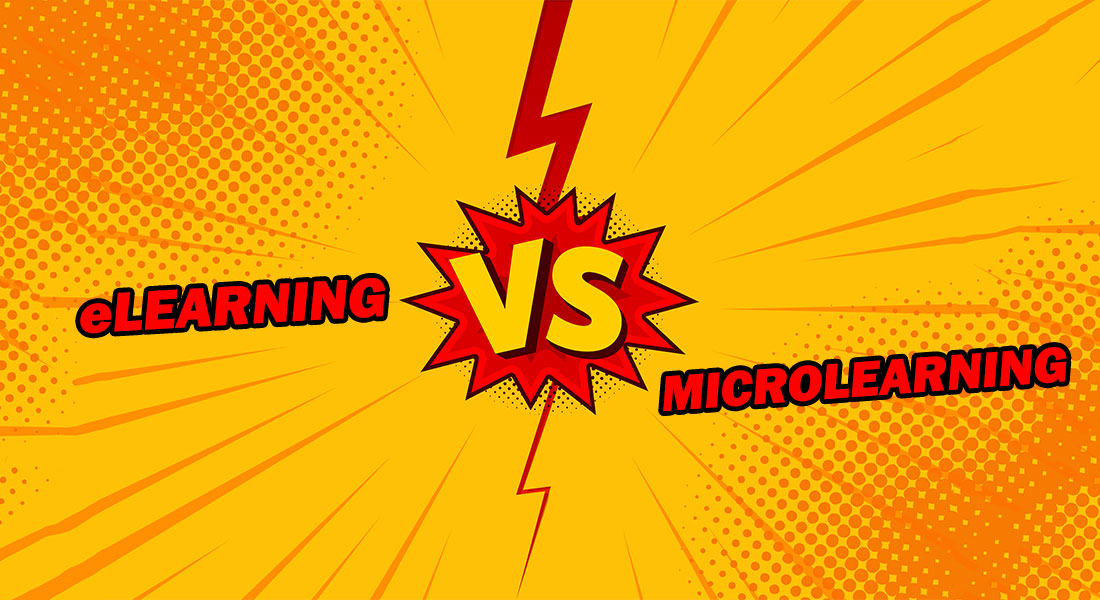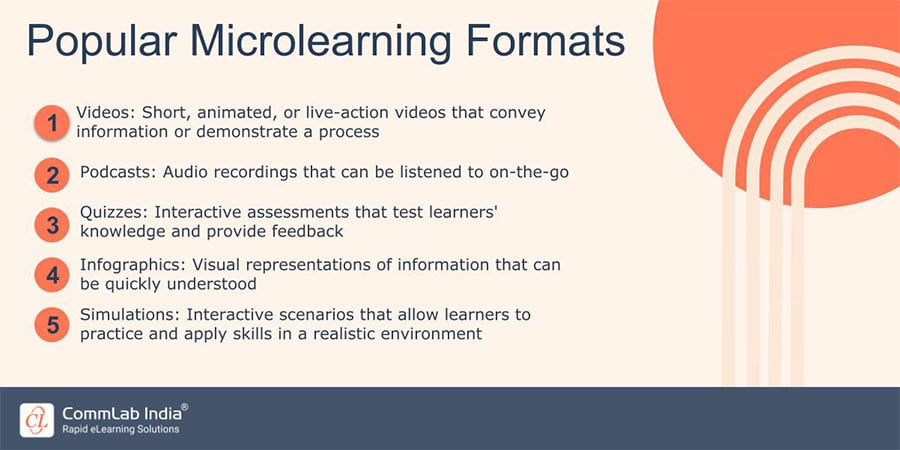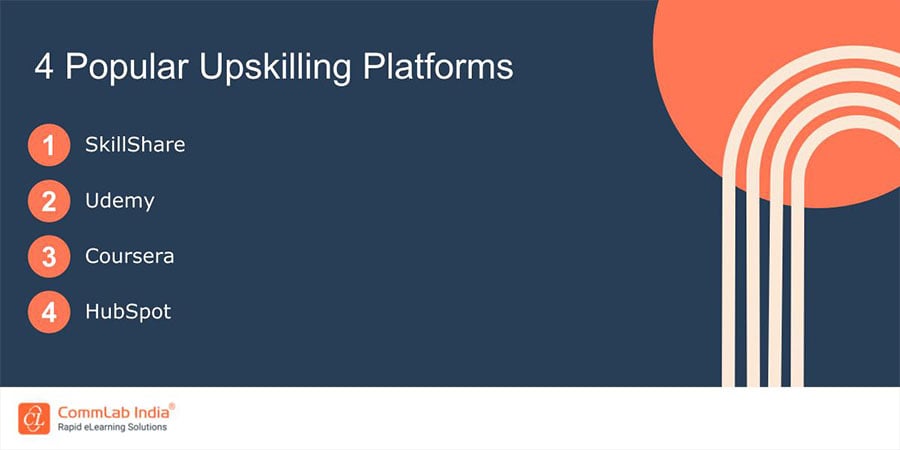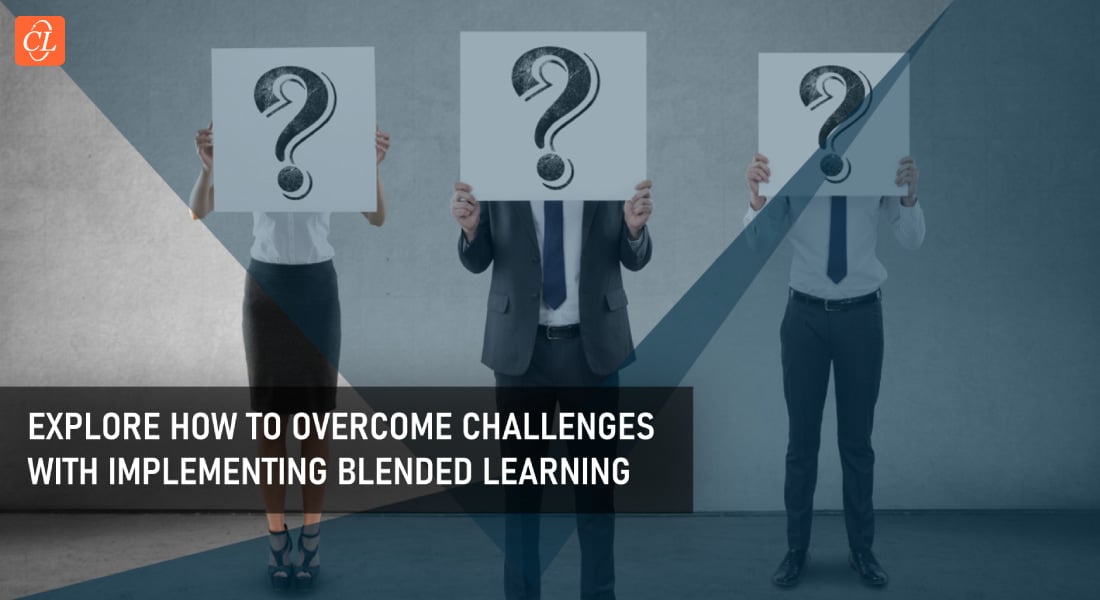eLearning VS Microlearning – Who Wins the Learning Race?

Ah,the wonders of the digital age! With technology revolutionizing every aspect of our lives, it’s no surprise that learning and development(L&D) has jumped on the bandwagon too. Enter eLearning and microlearning, two buzzwords that have been shaking up the learning landscape for quite a while now. But here’s the million-dollar question: When do we choose eLearning over microlearning, or vice versa? Fear not, dear readers, for we’re about to embark on a journey of witty comparisons, informative insights, and a sprinkle of convincing arguments to help you make that decision!
Finding it Hard to Choose Between eLearning and Microlearning?
A few aspects to be considered are –
- Learning objectives
- Time constraints
- Learning styles
Understanding eLearning and Microlearning in Brief
Let’s kick things off with eLearning. Picture yourself in the comfort of your home, clad in your coziest pajamas, sipping a cup of hot cocoa, and ready to dive into the vast sea of knowledge. That’s eLearning in a nutshell. It offers comprehensive learning experiences that take you on a guided tour through the depths of various subjects. It’s like a buffet, serving up everything from interactive videos and quizzes to discussion forums and live webinars.
Now, imagine you’re on a quest for knowledge, armed with just a few minutes to spare between meetings or during your daily commute. That’s where microlearning comes in. It’s like the snack-sized version of eLearning, perfect for those with short attention spans or a penchant for learning on the go. Think bite-sized lessons, infographics, and interactive modules that can be consumed in small, digestible chunks. Microlearning is the Tapas bar of training, serving up knowledge hors d’oeuvres that leave you wanting more.
eLearning VS Microlearning: Choosing the Right Approach
Now, the million-dollar question remains: When do we choose eLearning or microlearning? Fear not, dear readers, for we’ve got your back. Here are some handy guidelines to help you navigate the eLearning vs. microlearning conundrum:
1. Learning Objectives
If you’re diving deep into complex subjects that require a comprehensive understanding, eLearning is your best bet. It provides the structure and depth needed for a thorough exploration of topics. On the other hand, if you’re looking to reinforce specific skills or tackle short, targeted subjects, microlearning can be your trusty sidekick. Learn more about learning objectives and how they affect your training in this short video –
2. Time Constraints
We all know time is a sneaky little gremlin that loves to play tricks on us. When time is in short supply, microlearning swoops in to save the day. It offers quick, accessible lessons that can be squeezed into those elusive pockets of free time. So, if you find yourself frantically juggling multiple commitments, microlearning is your secret weapon.
3. Learning Styles
Just like we all have our preferred coffee order (venti, extra foam, please!), we each have unique learning styles. If you thrive in an interactive environment with discussions, forums, and collaborative projects, eLearning is your go-to option. However, if you’re a visual learner who absorbs information through infographics or videos, microlearning will be your trustworthy companion.
→ Download Asset Now: Blended Learning Checklist
Real-World Applications of eLearning and Microlearning
Let’s take a break from our witty banter and dive into the real-world applications of eLearning and microlearning. These two superheroes of L&D have been saving the day in various industries:
1. Corporate Training
Picture this – A sea of tired faces, nodding off during a never-ending PowerPoint presentation. Enter eLearning! With its interactive modules and engaging content, it brings life back into corporate training. eLearning saves costs associated with traditional training methods, ensures consistency in content delivery, and allows employees to access training materials as per their convenience. On the other hand, microlearning swoops in to deliver just-in-time training, providing employees with the information they need on demand.
2. Language Learning
Bonjour! Hola! Guten Tag! Learning a new language can be a daunting task, but fear not! eLearning platforms like Duolingo and Babbel offer comprehensive language courses that guide you through the intricacies of grammar and vocabulary. On the flip side, microlearning apps like Drops and Memrise offer bite-sized language lessons that fit perfectly into your busy schedule.
3. Skills Development
eLearning is an excellent tool for acquiring new skills or upgrading existing ones. Whether it’s learning a programming language, acquiring digital marketing skills, or improving public speaking abilities, eLearning platforms offer a wide range of courses to support skill development. Whereas, Microlearning is ideal for refreshing or reinforcing specific skills or knowledge. It allows learners to quickly brush up on topics, review key concepts, or practice specific tasks, ensuring that skills remain sharp and up to date.
Overcoming eLearning and Microlearning Challenges
No superhero is invincible, and eLearning and microlearning are no exception. Let’s face it, there are challenges to overcome and here are a few of them –
1. Learner Engagement
Ah, the battle against boredom! Keeping learners engaged can be a challenge. To combat this, eLearning platforms are incorporating gamification elements like leaderboards and rewards. Microlearning, on the other hand, leverages the power of interactivity and multimedia to keep learners hooked. Encouraging collaboration and providing opportunities for learners to interact with instructors and peers through forums or online communities can also be effective at times.
2. Technology Hurdles
Remember that time when your Wi-Fi decided to go on vacation, leaving you stranded in the realm of offline learning? Yes, technology can be a fickle beast. Technical issues such as poor internet connectivity, compatibility problems, or limited access to devices can hinder the smooth implementation of eLearning and microlearning modules. However, with advancements in offline access and mobile-friendly platforms, eLearning and microlearning are becoming more accessible than ever before.
3. Content Quality
Developing high-quality content that is engaging, interactive, and aligned with learning objectives can be a challenge. It requires careful planning, instructional design expertise, and multimedia integration. Tailor the learning experience to meet the specific needs and preferences of learners. Provide options for learners to choose their learning paths, topics of interest, or the level of challenge. Personalization enhances learner motivation and ownership of the learning process.
Wrapping Up!
When it comes to choosing between the two, it’s all about understanding your learning objectives, time constraints, and personal preferences. So, whether you’re diving deep into the ocean of knowledge with eLearning or snacking on bite-sized lessons with microlearning, embrace the wonders of digital technology and let the learning adventure begin! If you are still in a dilemma, consider blended learning as your best bet.
Blended learning caters to diverse learning preferences, time constraints, and learning objectives. It provides a balanced approach that leverages the advantages of both eLearning and microlearning, resulting in a more personalized and effective learning experience. To learn and understand more about blended learning, you can download our blended learning checklist and see if it works best for you or not.





